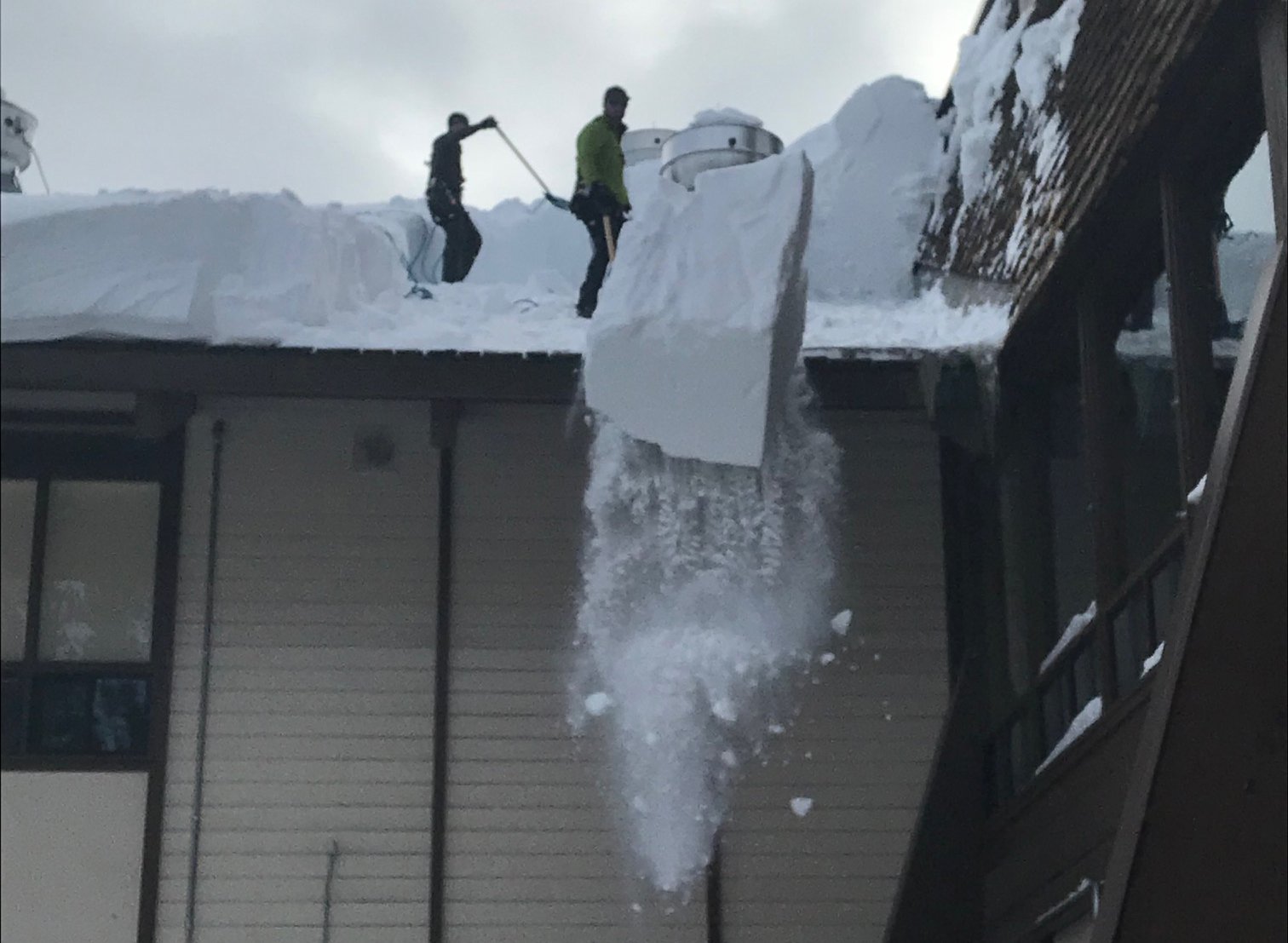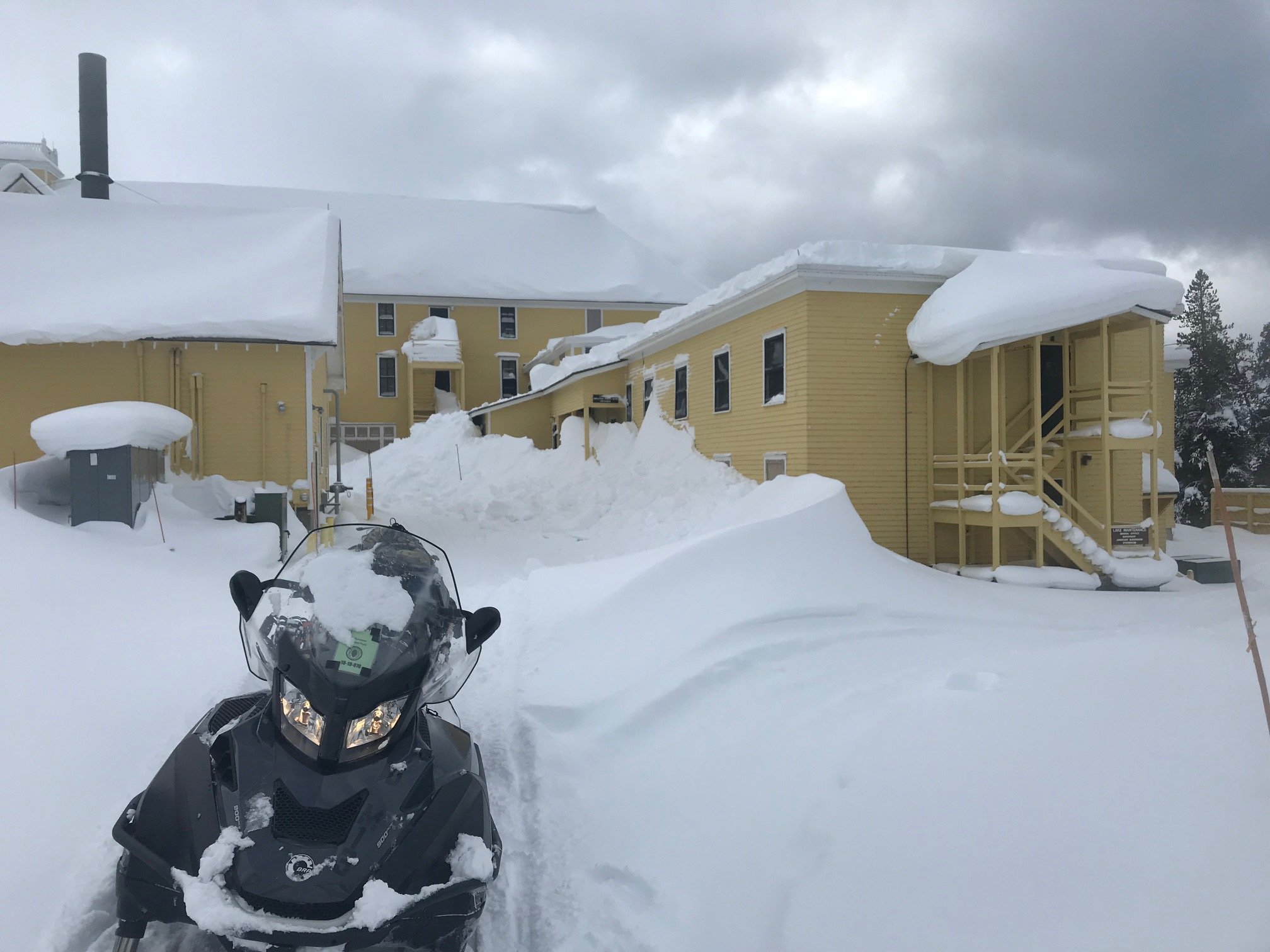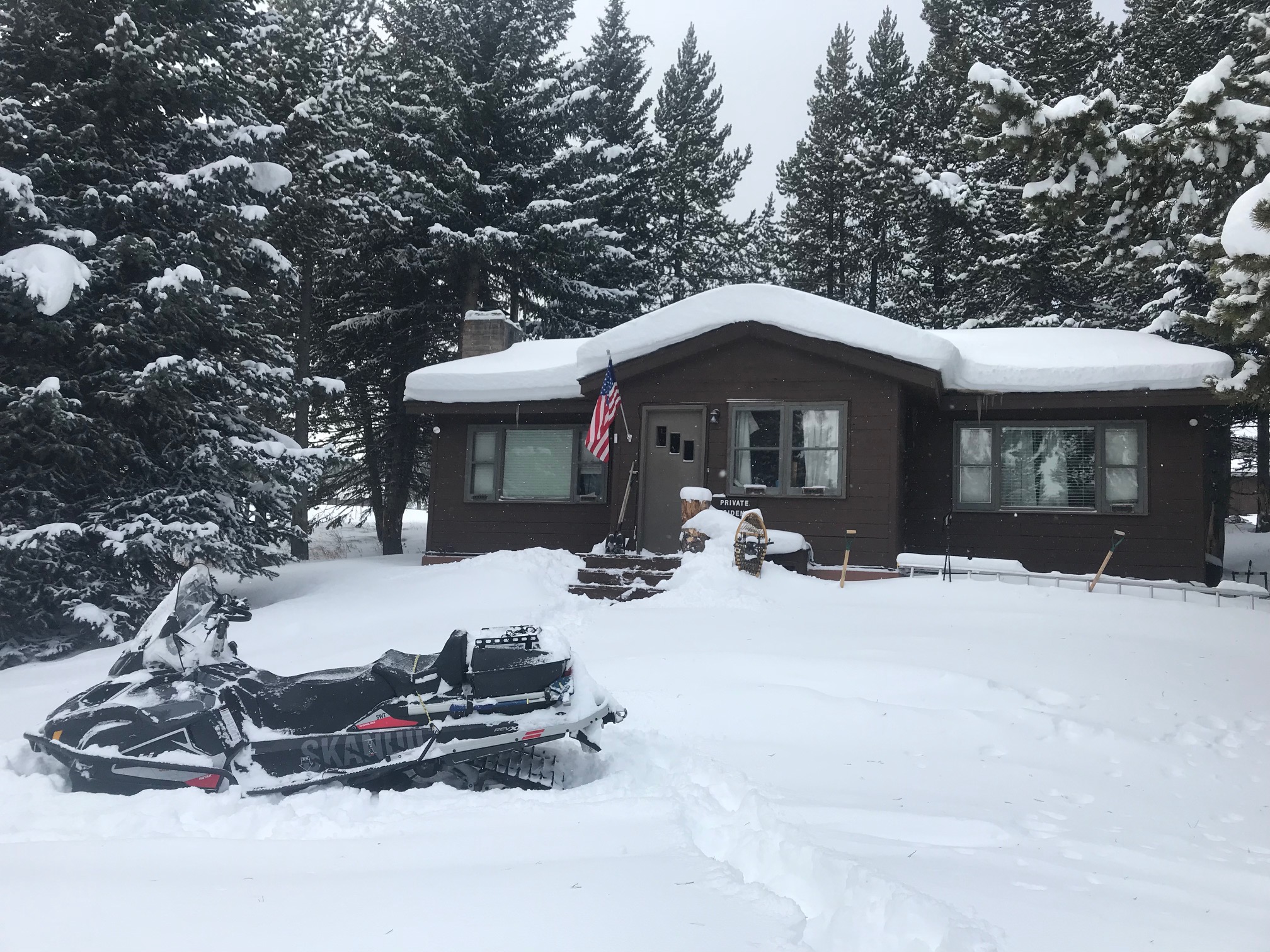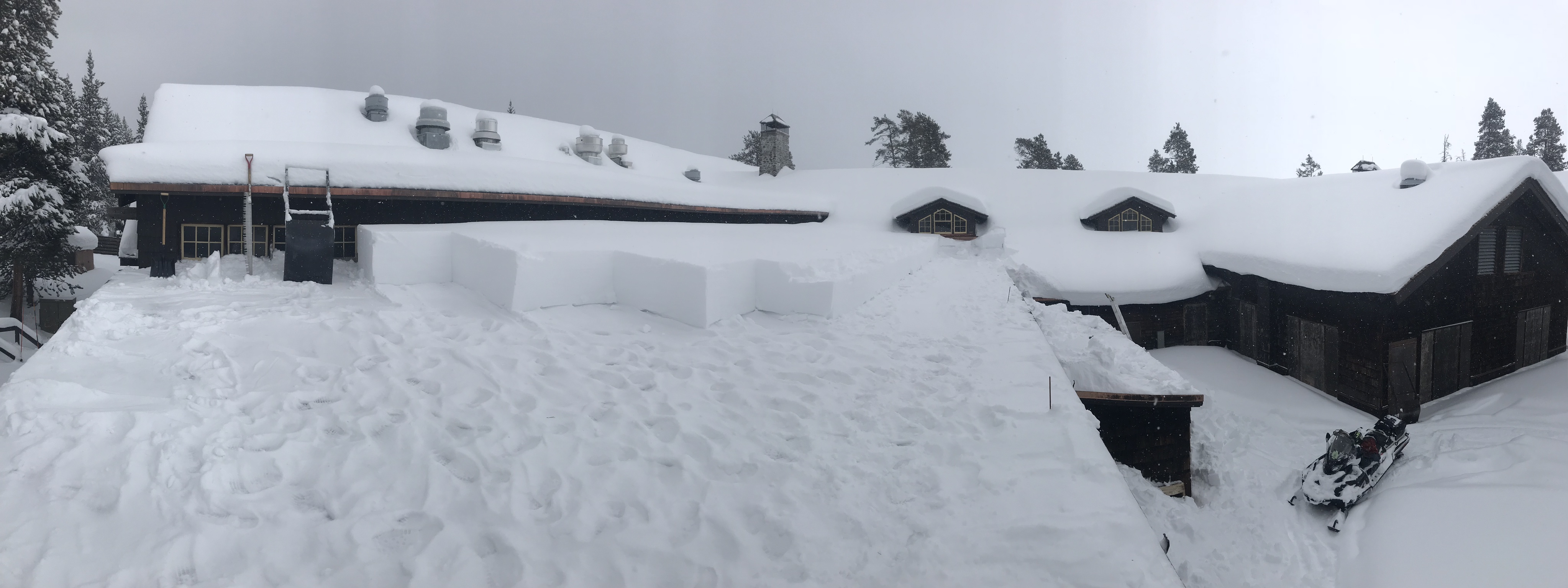The Life of a Yellowstone Winterkeeper
Yellowstone Winterkeeper
Yellowstone is home to a handful of winter keepers—a chosen few who occupy a solitary, frozen — and captivating — landscape.
Their primary task from December to March: to keep the park’s buildings free of snow by clearing snow from rooftops of lodges and cabins to prevent damage from the weight of Yellowstone’s prodigious snowfalls. Snowfall is highly variable. While the average is 150 inches (381 cm) a year, it is not uncommon for higher elevations to get twice that amount.[1]
Snow Removal at Canyon LodgeTwo park hotels, the Old Faithful Snow Lodge and Mammoth Hot Springs Hotel, welcome guests for winter discovery from late December to early March. But other visitor facilities are shuttered from mid-October to late April.
That’s where the park’s winter caretakers come in.
Former winter keeper Bill Keys (who hailed from Pennsylvania) was a relative newbie to the ranks of winter keepers, a tradition that dates to the park’s late 19th-century origins. His seasonal home was a cabin near Lake Yellowstone, where among other structures, he cleared snow from Lake Hotel. The waterfront Colonial Revival beauty is one of the park’s most iconic lodgings.
And yes, his work there elicits quips about the horror movie The Shining. But Keys says his world was really more akin to Disney’s Frozen.
“Some mornings are well below zero. When it’s that cold, you don’t move snow. Snow in Yellowstone is dry and fluffy. You can’t make a snowball with it. But it hardens when it’s really, really cold. So you wait until it sets up and you can cut it.”
Temperatures in Yellowstone range from zero to 20°F (-20°C to -5°C) throughout the day. Sub-zero temperatures are common, especially at night and at higher elevations. The record low temperature is -66°F (-54°C).[1]
Tools of the trade include a crosscut saw to cut the ice blocks and a flat coal shovel to push them off the rooftops. In a region where annual snowfall can measure from 10 to 20 feet, those ice blocks can be six or seven feet tall in areas where the snow has drifted, he says.
Other winter keeper duties include maintaining trails and keeping an eye on cabins, employee dorms, and other structures.
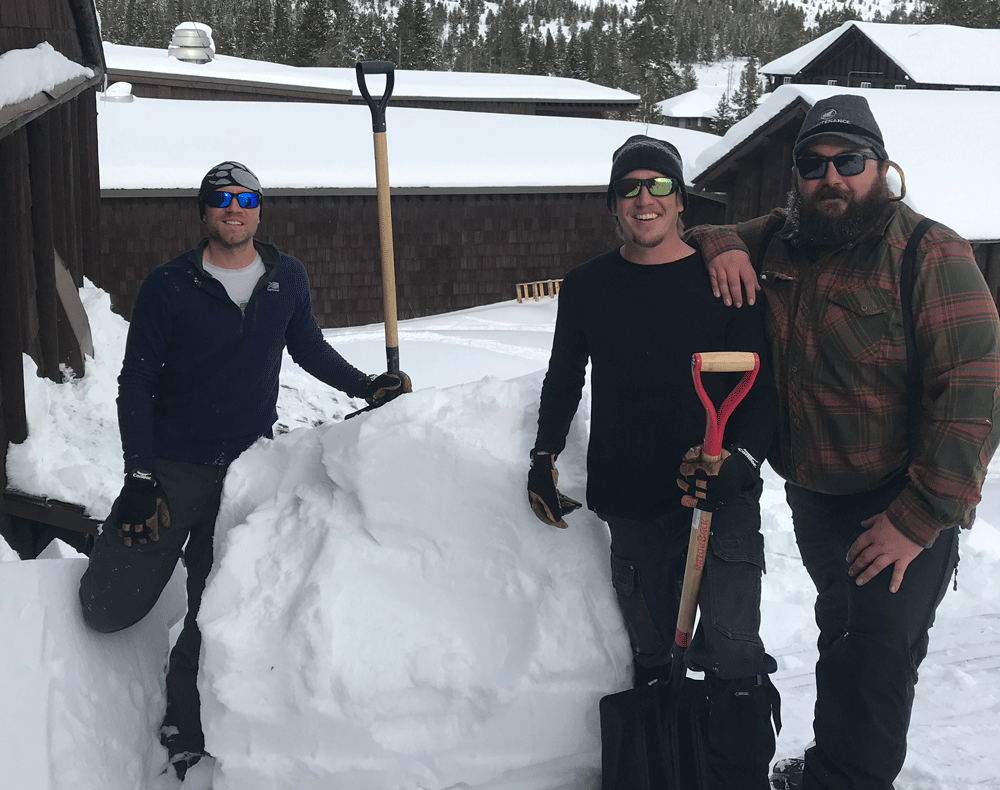
Left to right: Gerald Mast, Jon Aupperle, and Bill Keys working in the “nurses’ quarters” on the Old Faithful Lodge. The roof collects wind-blown snow and makes for large blocks over 5” tall.
“You have to move snow, but the job is also about just being here,” Keys says. “Classically, the winter keeper just made sure things didn’t get destroyed.”
Yellowstone’s early winter keepers were generally regarded as hermits and eccentrics. The life remains a solitary one, but with the advent of snowmobiles, it’s considerably less isolated. Cell phone service is fairly reliable. Keys even has a satellite dish.
His circa 1940s cabin is propane-heated and has a fireplace. At the start of the season, he would make a couple of Costco runs to stock up on food and other necessities. Two or three times during winter, he made the 70-mile trip via snowmobile into the town of West Yellowstone, Mont., for fresh fruit, vegetables, and milk.
“It’s amazing what biting into an apple will do for you when you haven’t had anything fresh for months,” he says.
The best thing about the job? The solitude. Clearing snow has a Zen-like quality. It’s manual, but it’s not mindless, Keys says.
“I liked being self-reliant and living in a place where everything requires more thought. Are the roads closed? Is a storm moving in? Is there going to be drifting snow?”
And the worst thing about the job?
“Solitude is good, but the separation (from family and friends) can get to you,” he says.
When Keys first arrived in Yellowstone, his intent was to stay a single summer and he ended up staying almost seven years, including three winters of solitude at Lake. Still, he’s got nothing on Steven Fuller who has maintained his post for 50+ years!
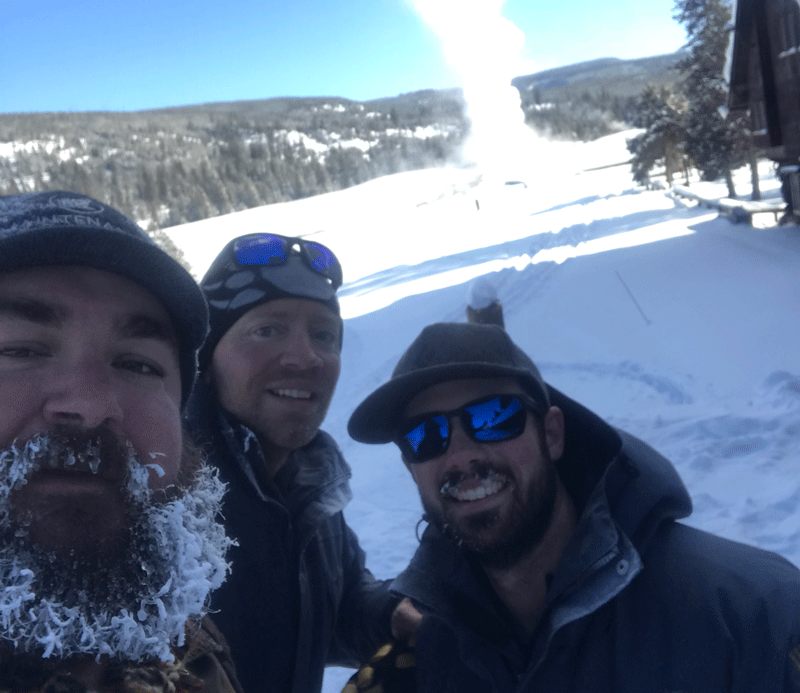
Bill Keys, Gerald Mast and Seamus Ryan on the mezzanine deck of the Inn with Old Faithful erupting in the background
Impacts of Climate Change
Snowmelt in the alpine areas of the Rocky Mountains is critical to both the quality and quantity of water throughout the region, providing 60–80 percent of streamflow in the West. Climate change is expected to affect both snow accumulation and rate of spring melt. In some places, warmer temperatures will mean more moisture falling as rain during the cooler months and the snowpack melting earlier in the year. The reduction in snowpack is most pronounced in spring and summer, with an overall continued decline in snowfall projected for Yellowstone over the coming decades. The Yellowstone, Snake, and Green rivers all have their headwaters in Yellowstone. As major tributaries for the Missouri, Columbia, and Colorado rivers, they are important sources of water for drinking, agriculture, recreation, and energy production throughout the region. A decrease in Yellowstone’s snow will affect millions of people beyond the boundaries of the GYE who depend this critical source of water.[2]
Scientists have already documented these changes in Yellowstone:
- Average temperatures in the park are higher now than they were 50 years ago, especially during springtime. Nighttime temperatures seem to be increasing more rapidly than daytime temperatures.
- In the last 50 years, the growing season (the time between the last freeze of spring and the first freeze of fall) has increased by roughly 30 days in some areas of the park.
- At the northeast entrance, there are now 60 more days per year above freezing than there were in the mid-1980s.
- There are approximately 30 fewer days per year with snow on the ground than there were in the 1960s.[3]
Washington, DC-based freelance writer Jayne Clark has been a travel reporter at USA TODAY and several other daily newspapers.
[1] https://www.nps.gov/yell/planyourvisit/weather.htm
[2] https://www.nps.gov/yell/learn/nature/changes-in-yellowstone-climate.htm
[3] https://www.nps.gov/yell/learn/nature/climate-change.htm
Explore Winter in Yellowstone
- Explore Winter in Yellowstone
